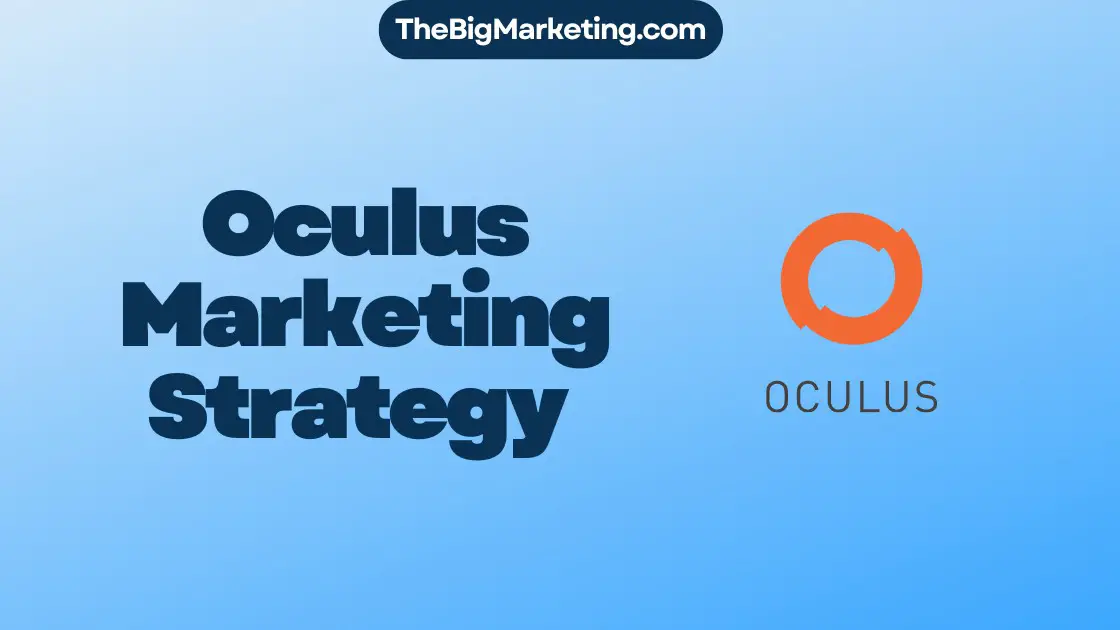Welcome to our in-depth exploration of the latest trends in post-purchase marketing strategy for 2024. In today’s ever-evolving digital landscape, businesses are recognizing the importance of building long-term customer relationships and maximizing the value of each purchase. From customer retention tactics to cross-selling strategies, this article delves into the key elements that contribute to a successful post-purchase marketing approach.
Key Takeaways:
- Post-purchase marketing is essential for driving customer loyalty and repeat purchases.
- Effective post-purchase strategies include personalized email journeys and upselling techniques.
- Word-of-mouth marketing and social proof play a crucial role in post-purchase satisfaction and brand advocacy nurturing.
- Digital product registration and customer engagement on social media can enhance the post-purchase experience.
- Optimizing the online checkout process can significantly impact sales and conversion rates.
The Power of Post-Purchase Customer Engagement
In the world of e-commerce, the journey doesn’t end after a customer completes a purchase. In fact, it is just the beginning. Post-purchase customer engagement is a powerful tool for businesses to foster customer loyalty, drive repeat purchases, and boost overall revenue. By employing strategies such as personalized communications and integrating QR codes, companies can significantly enhance open and click rates, ultimately maximizing the impact of their post-purchase marketing efforts.
Research shows that about 90% of consumers believe that their experience with a company is as crucial as the products or services they receive. This highlights the significance of post-purchase engagement in shaping customer perceptions and building long-lasting relationships. Companies that excel in personalization have been found to generate 40% more revenue than average, reinforcing the impact of tailored post-purchase emails.
One crucial aspect to consider in post-purchase customer engagement is mobile friendliness. Sixty-one percent of people primarily check their emails on mobile devices, underscoring the importance of mobile-optimized email designs. By ensuring that communications are easily accessible and visually appealing on mobile devices, businesses can effectively reach and engage their customers.
To measure the success of post-purchase email strategies, setting achievable goals is essential. One example is aiming to increase repeat purchase rates by 30% within six months. This provides a measurable target and allows businesses to gauge the effectiveness of their email campaigns and overall post-purchase engagement strategies.
A/B testing is another valuable tool that can assist in optimizing email campaigns. By deploying multiple variations of emails and analyzing the performance of different components, businesses can identify which elements resonate most with their audience. This data-driven approach enables targeted improvements that enhance customer engagement and increase click-through rates.
When it comes to customer support, speed and convenience are paramount. Interestingly, the average time a customer spends reaching support teams and getting quick responses through SMS customer service is just 42 seconds. This highlights the effectiveness of SMS as a communication channel for post-purchase customer engagement. Additionally, 42% of customers prefer engaging with customer service on messaging apps over any other channel, demonstrating the growing importance of leveraging these platforms.
With customers checking their mobile phones an average of 96 times per day, SMS customer service presents an opportunity for businesses to provide convenient and timely support. Implementing autoresponders at the start of messaging interactions can ensure faster initial responses and free up human agents to handle other inquiries. Furthermore, automation can deflect up to a third of repetitive and low-impact customer service tickets instantly, streamlining the support process and improving efficiency.
Efficient management of customer inquiries is crucial for maintaining satisfaction. Prioritizing tickets based on factors such as the time they have been open, VIP status, and category helps businesses efficiently handle and resolve customer issues. Additionally, using macro templates in customer service messaging enables faster responses to repetitive requests, resulting in improved agent workflow and enhanced customer experience.
To further elevate post-purchase engagement, businesses can embrace multichannel support, including multimedia messaging. This approach provides a more engaging way to interact with customers and allows for the exchange of relevant images to resolve any potential issues efficiently.
Studies and reports consistently showcase the impact of effective post-purchase processes on customer satisfaction and business growth. According to Zendesk, companies with an effective post-purchase process experience 29% fewer customer complaints compared to those with a less effective process. Additionally, a report by Epsilon revealed that customers who receive post-purchase follow-up are 50% more likely to make another purchase and spend an average of 138% more than those who don’t receive any communication.
In a highly competitive marketplace, prioritizing customer experience is crucial. Companies that prioritize customer experience grow revenue four to eight times faster than those that don’t, as highlighted by a report from Forrester. Positive post-purchase experiences also contribute to customer advocacy, with a study by Accenture revealing that 61% of consumers are more likely to recommend a brand after experiencing excellent post-purchase engagement.
Personalization plays a key role in effective post-purchase communication. HubSpot’s study found that personalized follow-up emails after a purchase resulted in a 29% increase in sales. Moreover, 75% of customers are more likely to buy from a company that recognizes them by name, as revealed in a survey by Ipsos. These statistics emphasize the importance of tailoring post-purchase communications to strengthen customer relationships and drive future purchases.
Instant communication is expected in today’s fast-paced digital age. According to Salesforce, 64% of consumers anticipate companies to interact with them promptly after making a purchase. Delivering a positive post-purchase experience is crucial for customer retention and future brand loyalty. A study by Narvar showed that 95% of customers would buy from a retailer again if they had a positive post-purchase experience.
Ultimately, effective post-purchase customer engagement plays a vital role in driving e-commerce business growth. Analysis by Bain and Company indicates that increasing customer retention rates by as little as 5% can translate to profit boosts ranging from 25% to 95%. By prioritizing post-purchase engagement strategies and continuously improving the customer experience, businesses can cultivate customer loyalty, drive repeat purchases, and achieve sustainable success in a competitive online landscape.
Leveraging Word-of-Mouth Marketing in the Post-Purchase Experience
Word-of-mouth marketing is a powerful strategy that can significantly impact a brand’s visibility and customer loyalty. In today’s digital age, social media platforms like Facebook play a crucial role in enabling customers to share their post-purchase experiences with others. By encouraging customers to share their positive experiences and recommendations, businesses can tap into the vast potential of word-of-mouth marketing to expand their reach and generate more sales.
Statistics indicate that 20-50% of purchases are the result of word-of-mouth recommendations, highlighting the significant influence it has on consumer behavior. Additionally, 88% of respondents trust recommendations made by people they know more than any other form of advertising, further emphasizing the importance of leveraging personal connections and user-generated content.
The Power of Facebook in Driving Word-of-Mouth Marketing
Facebook, with its vast user base of 1.9 billion daily users, offers an ideal platform for businesses to amplify their word-of-mouth marketing efforts. By creating engaging and shareable content, companies can encourage customers to share their positive post-purchase experiences on Facebook, reaching a wide audience of potential customers.
Moreover, Facebook provides various tools and features that facilitate word-of-mouth marketing, such as the option to leave reviews, tag businesses in posts, and share photos and videos of products and experiences. By leveraging these features, businesses can harness the power of social proof and user-generated content to build trust and credibility among their target audience.
Real-Life Examples of Successful Word-of-Mouth Marketing on Facebook
Let’s take a look at some real-life examples of businesses that have effectively leveraged word-of-mouth marketing on Facebook:
| Company | Approach | Results |
|---|---|---|
| Brand X | Implemented a referral program where customers received incentives for referring friends to their products | Generated a 30% increase in sales through referrals and word-of-mouth marketing |
| Brand Y | Encouraged customers to share their positive experiences through user-generated content contests | Reached over 1 million users through shared content, leading to a significant boost in brand visibility |
These examples demonstrate the tangible benefits of leveraging word-of-mouth marketing on Facebook. By implementing creative and engaging strategies, businesses can harness the power of social media to amplify their brand message and drive customer engagement.
In conclusion, word-of-mouth marketing is a valuable strategy to enhance the post-purchase experience. By leveraging platforms like Facebook and encouraging customers to share their positive experiences, businesses can tap into the power of personal recommendations and user-generated content to increase brand visibility, build trust, and drive customer loyalty.
The Role of Social Proof in Post-Purchase Satisfaction
Social proof is a powerful tool that can significantly impact post-purchase satisfaction. By incorporating social proof into the customer journey, companies can build transparency, enhance trust, and influence prospective customers’ decision-making. One effective way to leverage social proof is by showcasing the trip experiences of previous customers, providing reassurance and confidence to those considering making a purchase.
A case study conducted by a small-group travel company exemplifies the positive impact of social proof on post-purchase satisfaction. The company implemented a strategy to highlight the presence of others on the trips that prospective customers were considering. By displaying testimonials, reviews, and images from previous travelers, the company created a sense of community and authenticity surrounding the travel experiences.
This approach proved to be highly effective. Prospective customers were able to see the enjoyable and memorable moments shared by others, leading to increased confidence in the company’s offerings. This transparency and validation from fellow travelers provided social proof, demonstrating that the trips were worth the investment.
The results were remarkable. The company witnessed a significant rise in customer satisfaction and retention rates. Moreover, existing customers became advocates, sharing their positive experiences with others and attracting new customers to the brand. The impact of social proof on prospective customers cannot be overstated, as it influences their decision-making process and boosts their confidence in the trip experience.
By incorporating social proof into the post-purchase journey, companies can tap into the psychological phenomenon of social influence. Seeing others’ positive experiences creates validation, trust, and anticipation for the trip, enhancing overall customer satisfaction. This, in turn, leads to increased customer retention rates, repeat purchases, and positive word-of-mouth marketing.
Additionally, showcasing social proof can help prospective customers evaluate the quality and value of the trip experience. Potential travelers are more likely to trust recommendations from fellow travelers, as well as online consumer opinions. By providing testimonials, reviews, and real-life accounts, companies can address any doubts or uncertainties and facilitate informed decision-making.
Overall, incorporating social proof into the post-purchase journey is crucial for building trust, transparency, and customer satisfaction. By showcasing the trip experiences of previous customers, companies can establish credibility and authenticity, attracting and retaining more prospective customers. Leveraging social proof not only enhances the post-purchase satisfaction but also generates a positive impact on the company’s bottom line.
Enhancing Customer Engagement through Digital Product Registration
In today’s competitive business landscape, brands must go beyond the point of sale to foster long-term customer relationships. One effective strategy that has proven successful in enhancing customer engagement is digital product registration. By leveraging this approach, brands can gain valuable insights into customer preferences, strengthen brand loyalty, and increase revenue.
The Power of Digital Product Registration
Digital product registration is a process through which customers can register their purchased products online, providing brands with important customer data. This enables brands to personalize the customer experience, offer targeted promotions, and create personalized email journeys, resulting in enhanced customer engagement.
According to statistics, 25% of customers choose to register their products post-purchase. Implementing digital product registration primarily for indirect purchases has proved successful. For example, leading audio solutions provider, Jabra, saw 7% of their sales being direct, resulting in smaller profit margins. By encouraging more customers to register their products, Jabra was able to capture valuable customer data and drive revenue growth.
Furthermore, digital product registration allows brands to obtain consent for marketing permissions from registered customers. A staggering 78% of registered customers willingly consented to receive marketing communications, opening up avenues for personalized email journeys.
Personalized Email Journeys and QR Codes
Utilizing personalized email journeys is a key component of a successful digital product registration strategy. By segmenting customers based on their product preferences, brands can send targeted and relevant information to each customer. This not only increases customer engagement but also leads to higher conversion rates.
An effective way to capture customer attention and facilitate digital product registration is through the use of QR codes. Customers who scan these unique QR codes on product packaging or labels can easily register their products and unlock exclusive rewards or benefits. This strengthens brand loyalty and encourages customers to engage further with the brand.
Variable QR codes are also valuable for engagement campaigns such as lucky draw promotions. These codes can be scanned only once, adding an element of excitement and increasing the chances of customer participation.
A Case Study: Jabra’s Success
A real-life example of the success of digital product registration and personalized email journeys can be seen in Jabra’s post-purchase strategies. By implementing these strategies, Jabra experienced an increase in registered customers, resulting in higher open rates and significant revenue growth. This post-purchase strategy led to an impressive $3.5 increase per user over the following 12 months after contact.
Additionally, Jabra’s Net Promoter Score (NPS) improved by 50% through the implementation of digital product registration and personalized email journeys. These results showcase the effectiveness of this approach in capturing customer data, driving revenue growth, and improving customer satisfaction and engagement.
Overall, digital product registration combined with personalized email journeys and QR codes is a powerful combination to enhance customer engagement. By leveraging these strategies, brands can create a more personalized and rewarding customer experience, ultimately leading to increased customer loyalty, higher conversion rates, and revenue growth.
Expanding Organic Reach with an Improved Facebook Post Strategy
Organic reach on Facebook can be a challenge, with the average engagement rate of an organic post ranging from 2.58% down to just 1.52% as of July 2023. But don’t fret! There are strategies you can implement to boost views and interactions, effectively expanding your reach without relying on paid ads.
To optimize your Facebook post strategy, consider incorporating three-phase posts. These posts involve sharing updates before, during, and after an event, campaign, or project. By providing valuable content at each stage, you create anticipation, capture attention, and maintain engagement throughout the process.
Why does this work? Facebook algorithms prioritize posts that have high engagement potential. When you create early engagement through your before-phase posts, it sets the stage for increased reach and visibility for your subsequent content.
By sharing updates before the main event or launch, you generate excitement and interest from your audience. This can be done through teasers, sneak peeks, behind-the-scenes footage, or countdowns. Capture their attention and build anticipation.
During the event or campaign, keep your audience engaged with in-progress updates. Share real-time photos, videos, and highlights, encouraging viewers to interact, comment, and share their experiences. This generates social proof and creates a sense of community around your brand.
Finally, after the event, use your posts to recap and share successes, highlights, and testimonials. This helps to extend the lifecycle of the event and maintain engagement. It also provides an opportunity for those who missed the initial posts to catch up on what happened.
Engaging with your audience in the comments section is also crucial. Reply to comments promptly, encourage interactions, and create a conversation. This not only boosts post visibility but also builds a strong relationship with your audience.
An effective Facebook post strategy doesn’t stop at three-phase posts. Building a community on Facebook, such as through Facebook Groups, can significantly impact your organic reach. According to Facebook, groups with fewer than 10,000 members have an engagement rate of .52%, nearly triple the average post’s engagement rate. Create a space where your audience can connect, share their experiences, and provide valuable insights.
Another way to enhance organic reach is by leveraging user-generated content (UGC). UGC is viewed as authentic and trustworthy by your audience, and it can significantly boost your organic reach. Encourage users to share their experiences with your products or services, and showcase their content on your Facebook page.
In conclusion, expanding your organic reach on Facebook requires an improved post strategy. Incorporate three-phase posts, engage with your audience, build a community, and leverage user-generated content. By implementing these strategies, you can boost views, interactions, and ultimately reach a wider audience organically.
Optimizing Online Checkout for Increased Sales
When it comes to e-commerce, the checkout process plays a crucial role in determining whether a customer completes their purchase or abandons their shopping cart. With the average cart abandonment rate for e-commerce retailers at a staggering 69.82%, optimizing the online checkout experience has become paramount.
One of the key factors in achieving a successful checkout process is online checkout optimization. By streamlining the steps required to complete a purchase, retailers can reduce friction and improve the overall user experience. This includes minimizing the number of form fields customers need to fill out, eliminating unnecessary distractions, and providing clear and transparent information about shipping, taxes, and payment options.
An analysis of data from July-September 2020 revealed that repeat purchasers accounted for 54.93% of overall revenue for 13 e-commerce retailers across various sectors. This highlights the importance of catering to existing customers and maximizing their post-purchase experience. By focusing on customer retention and loyalty, businesses can leverage the higher likelihood of repeat purchases by existing customers (60-70%) compared to new customers (5-20%).
One effective strategy to boost online sales is by implementing dynamic social proof. By showcasing real-time customer reviews, ratings, and testimonials during the checkout process, retailers can instill confidence and trust in potential buyers. This social proof not only helps alleviate concerns about product quality but also creates a sense of urgency and credibility, encouraging customers to follow through with their purchase.
Additionally, urgency-driven marketing techniques can be employed to create a sense of scarcity and prompt immediate action. Limited-time offers, countdown timers, and personalized discounts can all contribute to a sense of urgency, compelling customers to make a purchase before they miss out on a deal.
To further enhance the checkout process, offering multiple secure payment options is essential. Research reveals that 7% of shoppers will abandon the checkout process if their preferred payment method is not available. By providing a variety of payment options, such as credit cards, digital wallets, and buy now, pay later services, retailers can accommodate the preferences of different customers, boosting overall conversions.
Moreover, mobile optimization is key in today’s digital landscape. By 2024, an estimated 187.5 million people will shop via mobile devices. Ensuring that the checkout process is seamless and user-friendly on mobile devices is crucial for capturing this growing market. Implementing features like Google autocomplete, which is 20% faster than manually typing out an address, and offering convenient mobile payment options like Shop Pay, which results in 1.72 times more conversions, can significantly improve the mobile checkout experience.
To summarize, optimizing the online checkout process is essential for boosting sales in the increasingly competitive e-commerce landscape. By focusing on online checkout optimization, leveraging dynamic social proof and urgency-driven marketing, providing multiple secure payment options, and prioritizing mobile optimization, businesses can greatly enhance the user experience and increase their conversion rates.
| Key Statistics | Insights |
|---|---|
| Existing customers are 60-70% likely to make a repeat purchase, while new customers are only 5-20% likely to make an initial purchase (Marketing Metrics). | Customer retention and loyalty are crucial for sustained sales growth. |
| An analysis of data from July-September 2020 revealed that repeat purchasers accounted for 54.93% of overall revenue for 13 e-commerce retailers in various sectors. | Repeat customers contribute significantly to the overall revenue of e-commerce businesses. |
| Abandoned shopping carts due to a complicated checkout process account for 17% of abandoned purchases. | Streamlining and simplifying the checkout process can reduce cart abandonment rates. |
| Free shipping resulted in a 37% uplift in conversions. | Offering free shipping can incentivize customers to complete their purchase. |
| Google autocomplete is 20% faster than manually typing out an address, contributing to a smoother checkout experience. | Implementing features like Google autocomplete can enhance the speed and convenience of the checkout process. |
| Shop Pay checkout option results in 1.72 times more conversions. | Providing convenient mobile payment options can significantly improve conversion rates. |
| By 2024, an estimated 187.5 million people will shop via mobile devices. | Mobile optimization is essential for capturing a significant share of the growing mobile shopping market. |
Amazon’s Marketing Strategy for Success
Amazon, the world’s leading e-commerce giant, has achieved immense success through its strategic marketing approach. The company’s marketing strategy revolves around customer experience, low prices, convenience, and a wide selection of merchandise. By focusing on these key elements, Amazon has been able to differentiate itself from its competitors and dominate the online retail industry.
One of the cornerstones of Amazon’s marketing strategy is its commitment to customer satisfaction. Through easy-to-use functionality, fast fulfillment, reliable customer service, feature-rich content, and a trusted transaction environment, Amazon aims to provide its customers with a seamless shopping experience. As a result, the company’s customer satisfaction rating has steadily increased from 65% in 2020 to 79% in 2022.
Amazon’s marketing tactics also play a crucial role in driving customer engagement and loyalty. The company leverages editorial and customer reviews, secure payment systems, personalized recommendations, and free shipping incentives to enhance the overall shopping experience. Additionally, Amazon’s Prime membership program, offering unlimited free shipping and a media service with instant streaming, further strengthens customer loyalty and encourages repeat purchases.
To boost product visibility and sales, Amazon utilizes search engine optimization (SEO) techniques. The company’s A9 algorithm plays a critical role in optimizing product discoverability on the platform, resulting in increased visibility and boosted sales for sellers. Moreover, products associated with Amazon Prime witness higher conversion rates due to the trust and loyalty of Amazon Prime members, providing sellers with a wider customer reach.
In addition to SEO, Amazon’s marketing strategy includes various advertising options. The company offers sponsored products and brands, allowing sellers to increase their product visibility and reach a larger audience. Moreover, Amazon’s advertising platform, including PPC campaigns and targeted ads, enables sellers to effectively promote their products and drive sales. High-quality images and videos in sponsored display ads are particularly essential for capturing buyer interest and standing out in a competitive marketplace.
Furthermore, Amazon’s marketing strategy encompasses innovative business models and services. The company has revolutionized the retail industry with launches such as Amazon Go, Kindle e-readers, Fire Tablet, Echo, grocery delivery, Amazon Fashion, and Amazon Web Services (AWS). These business model innovations have not only enhanced customer experience but also diversified Amazon’s revenue streams and solidified its position as a market leader.
To stay competitive and drive sales, Amazon employs effective pricing techniques. Competitive analysis and repricing tools enable sellers to win the Buy Box, a key factor in boosting sales on the platform. Additionally, leveraging promotions and discounts, timed to create urgency, and offering exclusive deals foster customer loyalty and encourage repeat purchases.
In conclusion, Amazon’s marketing strategy has been a significant driver of its unparalleled success. By focusing on customer experience, low prices, convenience, and a wide selection of merchandise, Amazon has established itself as a dominant force in the e-commerce industry. Through continuous innovation, data-driven advertising, and commitment to customer satisfaction, Amazon has built a trusted brand that resonates with millions of customers worldwide.
Key Elements of Amazon’s Marketing Strategy
| Elements | Description |
|---|---|
| Customer Experience | Focusing on easy-to-use functionality, fast fulfillment, reliable customer service, and a trusted transaction environment. |
| Low Prices | Providing competitive pricing to attract customers and maintain a competitive edge. |
| Convenience | Offering a seamless shopping experience with features like one-click ordering and fast shipping options. |
| Wide Selection of Merchandise | Curating a vast range of products to cater to diverse customer needs and preferences. |
Ikea’s Marketing Strategy: Standout Success
Ikea has established itself as a leader in the furniture industry, and its success can be attributed to its innovative and effective marketing strategy. The company has crafted a creative brand theme that resonates with consumers around the world, combining elements of affordability, sustainability, and an exceptional in-store experience.
One of the key aspects of Ikea’s marketing strategy is its commitment to sustainability. The company has made significant strides in using renewable materials and increasing the proportion of sustainable sources in its products over the years. By prioritizing environmental responsibility and reducing carbon emissions associated with its operations, Ikea has not only attracted eco-conscious consumers but has also demonstrated its dedication to creating a better world.
In addition to sustainability, Ikea’s marketing strategy incorporates Swedish design principles, which have proven to be highly appealing to customers. The company’s focus on quality, functionality, and contemporary aesthetics has built a strong foundation of customer trust and reliability. This is evident in the steady growth of sales figures and the positive perception of the Ikea brand.
An integral part of Ikea’s marketing approach is its iconic product catalogue. The catalogue serves as a powerful tool for engaging customers and driving sales. Many customers attribute their purchase decisions to interactions with the catalogue, highlighting its importance in Ikea’s overall marketing strategy.
Ikea’s pricing strategy has also played a significant role in its success. The company’s commitment to providing affordable options has resonated with value-conscious customers, leading to a consistent increase in market share. By offering competitive pricing without compromising on quality, Ikea has positioned itself as a brand that offers excellent value for money.
Recognizing the importance of customer engagement in the digital age, Ikea has prioritized its online presence. The company’s emphasis on leveraging online platforms to connect with customers has resulted in brand advocacy and positive word-of-mouth marketing. In 2022 alone, Ikea hosted over 4.3 billion visitors online, demonstrating its immense reach and influence in the digital space.
Conversion Rates and Ad Campaign Success
Ikea’s marketing efforts have translated into impressive outcomes. The furniture giant boasts a conversion rate of 1.7%, far surpassing the industry average of 0.5% in the furniture sector. This high conversion rate reflects the effectiveness of Ikea’s marketing strategy in driving customers to make purchases.
Moreover, by investing in Google Search Ads, Ikea experienced a remarkable 117% increase in sales and a 68% improvement in its return on ad spend (ROAS). This demonstrates the effectiveness of paid advertising channels in reaching and converting customers.
Ikea’s dedication to innovative advertising can be seen in its interactive storytelling ad campaign, which achieved a 33% ad recall, a 33% view rate, and an impressive ROAS of 460%. This campaign exemplifies Ikea’s ability to captivate audiences and create memorable brand experiences.
Online Presence and Competitive Advantage
Optimizing its product pages based on SEO guidelines has further strengthened Ikea’s online presence. This strategy has allowed the brand to attract a higher number of online visitors compared to its competitors. By leveraging digital marketing techniques, Ikea has been able to maintain a strong competitive advantage in the digital landscape.
While Ikea continues to excel in its marketing efforts, it’s important to acknowledge other players in the industry who have successfully implemented effective strategies. Dunelm, a furniture retailer in the UK, witnessed a significant 111% increase in online sales by prioritizing omnichannel retail efforts. Similarly, Wayfair’s integration of 3D and AR technologies into its customer journey has provided an immersive buying experience, eliminating the need for customers to switch between tabs.
| Statistic | Value |
|---|---|
| Sustainability commitment | Evident in the use of renewable materials and increase in sustainable sources |
| Reduction in carbon emissions | Result of focus on energy efficiency |
| Sales growth | Reflects customer trust and reliability |
| Role of product catalogue | Crucial in engaging customers and driving sales |
| Pricing strategy | Successful in attracting value-conscious customers |
| Emphasis on online platforms | Resulted in brand advocacy and positive word-of-mouth |
| Online visitors in 2022 | Over 4.3 billion |
| Conversion rate | 1.7% (industry average: 0.5%) |
| Sales increase with Google Ads | 117% |
| ROAS with Google Ads | 68% |
| Interactive ad campaign performance | 33% ad recall, 33% view rate, 460% ROAS |
| Online visitors attracted through SEO-optimized pages | Higher than competitors |
| Dunelm’s increase in online sales | 111% through omnichannel retail efforts |
| Wayfair’s immersive buying experience | Integration of 3D and AR technologies |
Conclusion
In conclusion, this article has highlighted the importance of implementing a strategic post-purchase marketing strategy to drive customer retention, brand advocacy, and sales optimization. Through the case studies and examples discussed, it is evident that businesses can significantly benefit from focusing on the post-purchase experience.
By establishing online communities, businesses can tap into valuable insights on new products and services, resulting in improved customer satisfaction and continuous feedback. Additionally, adopting an omnichannel customer support approach can lead to higher engagement rates and returning customers.
Oasis Clothing serves as a prime example of seamless customer experience by integrating their website, mobile app, and physical stores. Their customer support team’s ability to address complaints, replace items, and ship directly to customers’ homes through their app showcases the power of efficient post-purchase support.
Existing customers play a crucial role in generating new prospects, with recommendations from friends, family, and social media having a significant influence. By providing personalized marketing, businesses can cater to customers’ preferences, ultimately leading to increased revenue. Furthermore, loyalty programs and omnichannel strategies have proven to drive higher customer retention rates year over year.
By implementing these post-purchase marketing strategies, businesses can establish a strong foundation for long-term success. The insights and data shared in this article serve as a valuable resource for organizations looking to optimize their post-purchase customer experience.







